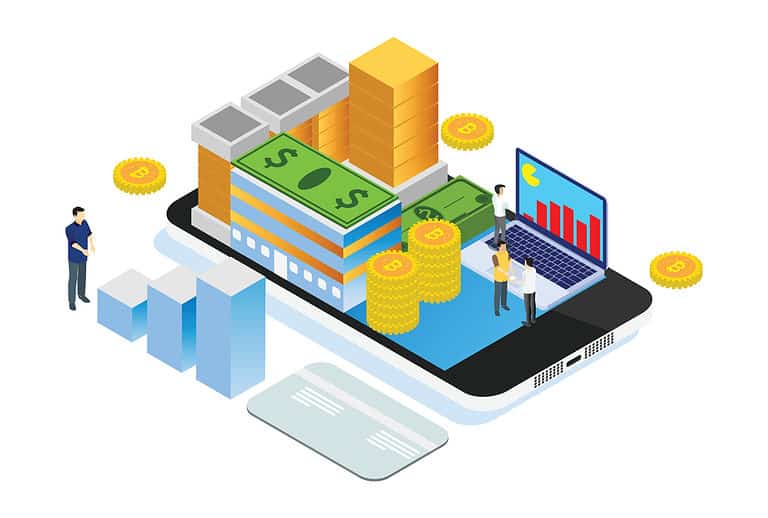Master Your Projects: A Guide to Essential Project Management Deliverables
In the realm of project management, deliverables are both milestones and tools of success. This practical guide demystifies essential project management deliverables, equipping you with the concise blueprint of documents that lead to project completion. Expect to grasp the what, why, and how of each deliverable, from charters to closure reports, empowering you with the expertise to navigate your project’s challenging journey.
Key Takeaways
Project management deliverables such as charters, plans, and status reports are central to successful project execution, providing structure and clear communication among stakeholders.
The proper management of change requests and capturing lessons learned are crucial for the continuous improvement of project processes and future project success.
Leveraging project management software and tools can enhance efficiency and collaboration, but documentation should be tailored to the specific needs of each project.
Decoding Project Management Deliverables
Project documentation serves a crucial role in the lifecycle of any project. Far beyond just being paperwork, it forms an integral part of successful project management. Acting as a guide and reference point for stakeholders, these documents act like a compass for the project manager and team.
From outlining the overview of the project to creating proposals and organizational charts, essential project documents ensure that all members are aligned throughout every stage of the process. And when it comes to updates or changes? A solid management system is key in ensuring that teams use appropriate templates while also keeping records up-to-date, ultimately leading to efficient planning and execution strategies for achieving success in the given timeline.
The Cornerstone of Project Initiation: Project Charter

The project charter is an important document that a project manager encounters at the start of a new venture. It serves as formal authorization for the project and outlines its objectives, scope, and stakeholders involved. As the foundation of any successful project, it marks the beginning of the initiation phase and plays a crucial role in ensuring its success.
Without a well-defined charter, both the vision for the project and the authority for strategic planning rest on shaky ground. This increases risks such as miscommunication with stakeholders which can result in misunderstandings or even failure of the entire process.
Blueprint for Execution: Project Management Plan

Once the project charter is established, the next step is to create a detailed project management plan. This comprehensive document acts as a guide for executing and monitoring all aspects of the project, including scope, schedule, and cost management. It plays a critical role in ensuring that the project stays on track throughout its duration.
The implementation and management of the actual project heavily rely on this carefully crafted plan. It addresses important elements such as managing tolerances and variances, change control procedures, and quality evaluation measures. Additionally, it outlines tasks organization along with linking dependencies and milestone identification to maintain an efficient schedule and meet deadlines accurately.
Scope Management Subsection
The project scope statement is a crucial component of the overall project management plan. It defines the necessary tasks and resources to complete the project within designated time and budget constraints. By outlining what is included and excluded in the project, it establishes clear expectations for stakeholders from the beginning.
Included in this scope statement are key aspects such as assumptions, requirements, acceptance criteria, executions, constraints, and milestones that make up the overarching scope of work for your specific project. Additionally, the accompanying scope management plan outlines strategies for effectively managing these elements throughout its duration to ensure that all components stay aligned with defined parameters.
Overall,the thorough development of a comprehensive scope statement helps guide successful execution by communicating important details about responsibilities,guidelines,and objectives.Furthermore, it ensures efficient use of resources, saves both money, time, and minimizes risk while ensuring success.As long as there remains tight adherence to planned measures, this element shall remain an invaluable tool you can rely on over course or through changes during any stage.The outcome being timely completion per given guidelines, maintenance status quo, error-free conclusions without conflicts, which gratifies owners also meeting their needs, without causing unnecessary delays Saving adibitional costs involved.Because at closeout ownership transfer is completed.
Schedule Management Subsection
An important component of the overall project management plan is the schedule, which works closely with the project plan. The timeline outlined in a project plan includes all necessary information for executing tasks such as their durations, dependencies and required resources. This timeline serves as an integral factor in establishing feasible phases and deadlines to ensure timely completion of the entire project.
The schedule baseline acts as a reference point when evaluating progress made on a particular project. Various network diagramming techniques like Critical Path Analysis (CPA), Program Evaluation Review Technique (PERT), Critical Chain Method or Gantt chart are employed during construction of these schedules so that projects stay on track and achieve desired milestones within set time frames.
Cost Management Subsection
Managing costs is crucial in any project, making cost management an essential aspect of the project management plan. The allocated budget for a project serves as a comprehensive financial summary that includes all necessary expenses such as activity costs, contingency reserves and management reserves.
The cost baseline provides a benchmark for monitoring actual expenditures and measuring financial progress throughout the duration of the project. Accurate estimation of costs is vital in effective project management to ensure that the approved budget can cover all projected expenses from start to finish.
Mapping Out Success: Work Breakdown Structure (WBS)

The next essential in project management is the Work Breakdown Structure (WBS), a hierarchical breakdown of project tasks and deliverables used to plan and meet requirements. The WBS visually organizes all necessary tasks, aiding in comprehensive fulfillment.
When constructing a WBS, it’s crucial to include all outlined scope elements. Tools such as Creately can enhance this process by adding data fields like deadlines, responsible parties, cost analysis or providing detailed descriptions for each deliverable with notes.
Keeping Track of Progress: Project Status Reports
Project status reports serve as the heartbeat of a project, providing regular updates on its progress, challenges faced, and significant milestones achieved. These reports are crucial in keeping stakeholders informed about the current state of the project and enabling them to make well-informed decisions. They serve as an official written record that consistently communicates any developments or changes throughout different stages of the project.
Typically, these reports include information on how far along the project has come, any hurdles encountered during its course, and important achievements reached. The use of project status reports offers several benefits such as enhancing communication among team members, facilitating better decision-making by stakeholders based on up-to-date information presented in these reports, and promoting transparency within both internal teams and external parties involved in the projects’ execution.
Financial Oversight: Project Budget Tracker
A crucial tool for managing project finances, the project budget tracker displays both expected and actual expenditures of a project. Its main purpose is to aid in keeping track of the financial state of a given project. The estimated total cost of a project can be found within its comprehensive overview, making it essential for effectively allocating resources.
The use of a budget tracker allows calculating variance between projected and actual expenses, which plays an important role in identifying potential discrepancies while also allowing timely corrective measures to take place. Not only does this document help monitor external costs, but also internal expenses, ensuring that all spending remains within the designated boundaries set by the initial budget plan.
Ensuring Clarity and Consistency: Project Communication Plan

The project communication plan plays a vital role in the success of any project, serving as its lifeblood. This strategic document ensures effective communication among team members and stakeholders through clear delineation of roles and responsibilities within the project team.
To develop an efficient Project Communication Plan, it is important to select an appropriate format for the plan, establish specific goals for communication, identify all relevant stakeholders and their information needs, choose suitable methods of communication, and determine how often communications should take place. By defining different channels of communication and assigning specific responsibilities to each member of the project team, this plan guarantees consistency throughout the entire duration of the project.
Change Control: Managing Project Scope and Requests
Proper management of change is crucial for the success of any project, as changes are inevitable. To effectively handle change requests to deliverables, project managers use a document known as the change request document. The main challenges in managing changes involve ensuring that all parties involved understand and adequately detail the requested modifications while also addressing their potential impact on the project schedule.
After receiving approval from stakeholders for a proposed alteration, it is important for project managers to thoroughly review and update other essential documents related to the project. These include but are not limited to: plans, schedules, budgets,risk registers, and communication strategies.This practice guarantees that all necessary materials remain synchronized with one another throughout each stage of development so that progress towards completion can be maintained.
In order for a successful outcome, it’s paramount that projects operate according to plan. Adhering strictly through timely updates or revisions made within reliable documentation paves an effective path forward.Essentially upon acquiring authorization by key individuals, such adjustments must duly apply to secondary records having extensive duration trials.Continuously keeping these organised core components aligned establishes durability, followed by appropriately implementing prescribed directions pertaining to altering timescales.
Capturing Lessons for Future Projects: Lessons Learned Document
A Lessons Learned Document plays a crucial role in promoting continuous learning and enhancement within project management. This report documents both positive and negative occurrences during a project, recording best practices for upcoming projects and aiding project managers in avoiding past errors.
It is the shared responsibility of the entire team to contribute to and agree on the lessons learned. The documentation should be distributed among not only the current project team but also other managers, enabling them to learn from their peers’ experiences and prevent repeating similar mistakes in their own projects.
Navigating Project Completion: Project Closure Report
The project closure report is a formal document that summarizes the outcomes and success of a completed project. It plays an important role in evaluating the effectiveness of the project and ensuring a smooth transition to post-project activities.
In order for this document to be considered officially endorsed, it must receive approval from the designated sponsor of the project. This signifies that all necessary tasks have been completed, effectively closing the project and signaling its official conclusion. At this point, preparations can begin for moving on to subsequent stages in the overall life cycle of the project.
Harnessing Tools for Efficiency: Leveraging Project Management Software

The use of project management software has become crucial in the modern digital era, as it greatly enhances efficiency in team collaboration and documentation. Programs such as ProjectManager and Creately provide adaptable solutions specifically designed to aid with managing project plans, resources, costs, and teams. They also serve as a central location for storing important project documents.
Microsoft Project and Its Utilities
When it comes to project management, Microsoft Project is a comprehensive tool that offers various features including Gantt charts, task organization, resource allocation and reporting. This software serves as an all-encompassing solution for effectively managing projects.
By providing functions such as different project perspectives, a systematic approach to handling tasks, efficient utilization of resources through scheduling and visual representations like the Gantt chart and calendar views, Microsoft Project supports key elements necessary for successful project execution.
Collaborative Tools for Team Engagement
In the realm of project management, platforms such as Slack and Trello play a crucial role in facilitating team collaboration and communication. By consolidating teams, files, and tools onto one unified platform, they allow for seamless integration with other applications, which simplifies various tasks including project planning, task management, and accessing deliverables.
Trello stands out among these platforms due to its unique features designed specifically for enhancing collaboration. Its visually-oriented approach aids in managing responsibilities more effectively while also keeping track of progress made on different aspects of the project.
Tailoring Documentation to Your Project Needs
It is important to remember that each project is unique and the documentation must be tailored to meet its specific requirements. While the guidelines and documents provided in this manual serve as a good starting point, they should be adjusted according to the particular needs of your project.
To ensure successful completion of your project, it is recommended that you follow these steps:
Choose appropriate methodologies and templates.
Reference relevant sources.
Conduct a thorough evaluation of the project.
Engage with key stakeholders.
5.Maintain detailed records of any customized approaches used.
By adhering to these steps, you can increase the likelihood of achieving success in your project through effective documentation practices.By following all aspects mentioned above, it will help ensure positive outcomes for projects while keeping track of progress made at every step.Furthermore, having well-documented procedures, policies,and plans allows for better understanding among team members during implementation, reducing chances for errors or misunderstandings thus leading to greater chances of project success.In conclusion,customized documentation plays an essential role in the overall success of a project and should not be overlooked or underestimated during the process to achieve goals.
Summary
To sum up, successful project management involves more than simply completing the work. It encompasses effectively overseeing and monitoring every aspect of a project from beginning to end, while also ensuring that all parties involved are in agreement. Utilizing appropriate tools and documentation allows project managers to navigate the intricacies of any undertaking and guarantee its ultimate accomplishment.
Frequently Asked Questions
What is project planning documents?
A set of official documents, known as project planning documents, outlines the steps involved in carrying out and monitoring a project. These include strategies for managing potential risks, allocating resources effectively, maintaining clear communication channels, defining the scope of work and setting baselines for cost and schedule.
The purpose of these formalized plans is to establish an organized approach towards completing a project. By including various aspects such as risk management techniques and baseline considerations for different factors like budget constraints and timeline expectations within their documentation process ensures that projects are carried out efficiently.
What are the 7 parts of a project plan?
A project plan comprises of seven essential parts: objectives and goals, metrics for measuring success, roles and stakeholders involved, scope and budget details, milestones to be achieved, deliverables that are expected at different stages of the project along with dependencies on other elements. Additionally, a timeline is created detailing a schedule for completion as well as a communication plan outlining how information will be shared among team members.
What are the 5 key areas of project planning?
Effective project management involves careful consideration of various aspects such as project scope, time, cost, quality and risk. These key areas are crucial for the success of any project.
Project planning encompasses a variety of elements that are vital to ensuring a successful outcome. It includes managing the scope of the project, allocating appropriate time and resources within budget.
What are key documents in project management?
Essential documents in project management comprise a comprehensive plan, schedule, risk register, budget allocation, RACI matrix for role clarification and accountability distribution among team members. It also includes a team charter to define roles and responsibilities within the group and establish effective communication protocols through a detailed communications management plan. Other vital aspects include work breakdown structure outlining tasks required for successful completion as well as work breakdown structure outlining tasks required for successful completion.
What are the project documents for PMP?
There are nine vital components that make up the essential project documents for PMP, all of which play a crucial role in effective project management. These items hold significant importance as they contribute to ensuring the success of the organization.






